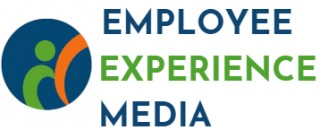Understanding Employee Satisfaction
Exploring Employee Satisfaction Levels
Reflecting on the quarter gives leaders a foundational opportunity to understand the complex nature of employee satisfaction. This understanding is crucial as it directly impacts productivity, retention, and the overall success of the organization. It's essential to consider the specific goals set at the beginning of the year and analyze how these align with the experiences employees have had throughout the months from January to December.
One effective approach is gathering feedback through surveys that address the core areas affecting employee satisfaction. Questions can include aspects related to immediate work environment and broader organizational culture, addressing both day-to-day experiences and long-term career aspirations. By regularly implementing a quarterly review, organizations can ensure they are on track with yearly goals and make necessary adjustments.
This systematic evaluation should touch upon the degree to which employees feel valued on a personal and professional level. Are the current systems for recognition and reward meeting their expectations? As you click share findings across the organization, it opens a window into areas that might require attention moving forward.
A critical aspect of this evaluation is also understanding how life events outside work influence satisfaction. Life events could range from major personal milestones to everyday stressors. Acknowledging these will help tailor support systems that enhance overall employee experience. For instance, offering flexible work schedules or opportunities for work-life balance could significantly contribute to positive outcomes.
For more comprehensive insights on how policies such as a PTO request form can influence these dynamics, consider understanding the broader
importance of a PTO request form to enhance employee experience. This holistic approach to evaluating satisfaction serves not only to meet immediate concerns but also to fortify long-term employee engagement.
Evaluating Communication Effectiveness
Ensuring Clear Communication Channels
Within the dynamic setting of a workplace, effective communication forms the backbone of successful operations and influences overall employee satisfaction. As organizations roll out strategies in January through December, it's crucial to periodically assess how well communication channels function to support quarterly and yearly goals.
Clear communication fosters an environment where expectations are understood, and the pathway to achieving them is transparent. Reflect on the past quarter: have the goals set out in March or September been communicated effectively to all members? It’s important to recognize that without robust communication, efforts spent on professional development or work-life balance might not yield the desired results.
Here are some reflective questions to examine communication efficiency in your organization:
- Are updates and quarterly reviews shared consistently and timely with employees?
- Is there a clear structure for feedback during each quarter, such as in February or July?
- How often do employees feel their voices are heard and valued, not just during a dedicated day, but throughout the year?
Investing time in answering these questions will help identify gaps in communication. Organizations should also consider surveying employees to gather insights on how communication can be improved.
Understanding the impact that communication has on job satisfaction through pension plans provides further insights that are worth exploring.
As the organization moves forward, refining communication strategies could open windows for enhanced team collaboration and ultimately enrich the employee experience. Whether addressing goals promptly in March or ensuring comprehensive updates by December, communication remains pivotal to achieving both immediate and long-term objectives.
Assessing Professional Development Opportunities
Advancing Careers Through Continuous Learning
Evaluating professional development is crucial as it directly influences employee satisfaction and career progression. It’s essential to continuously assess whether your organization provides a rich environment for learning and skill enhancement, which aligns with its quarterly and yearly goals.
Consider these key questions when reflecting on growth opportunities:
- Are the training programs aligned with employee career goals? Regularly assess if the professional development initiatives are steering employees towards achieving both personal and organizational goals.
- Is there a varied offering for skill-building? Employees at different career stages benefit from diverse learning modules. Offering a mixed format of online courses, workshops, and seminars throughout the year ensures comprehensive professional growth.
- How often are these opportunities revisited? Incorporating quarterly reviews, perhaps in alignment with the quarter's closing months like September or December, helps in evaluating the effectiveness and relevance of the current professional development strategies. This will help in promptly addressing any mismatches and optimizing training offerings.
- Does feedback from employees play a role in shaping these opportunities? Encouraging feedback on existing professional development paths can open a window for understanding gaps and areas for improvement. This practice not only enhances engagement but also promotes a culture of continuous improvement.
Ultimately, when avenues for professional growth match the evolving expectations of employees, it may significantly boost job satisfaction and commitment to the organization. Initiatives that nurture skill development do not just prepare employees for their current roles but empower them to embrace future challenges confidently. Recognizing team efforts through shout-outs also proves powerful in raising morale and fostering a productive learning environment. For insights on recognition systems,
click here.
Analyzing Work-Life Balance Initiatives
Balancing the Scales: Life and Work Harmony
In today's fast-paced environment, fostering a healthy work-life balance is paramount for both personal satisfaction and professional productivity. It's important not only to understand the demands of the workplace but also to be mindful of external life commitments. Here's how you can reflect on your current initiatives targeting this balance.
- Questions to Assess Balance Initiatives: Start by asking how well the company’s policies support both work and personal goals. Reflect on the progress over each quarter—has there been a noticeable improvement in this regard since the last assessment in March or June? Consider how these initiatives align with larger yearly goals.
- Time Allocation Trends: Review work schedules and time logs from the past few months—are employees feeling overwhelmed in the periods of February to April, or more recently during August September? These insights can help in adjusting the workloads more effectively.
- Flexibility Options: Assess the effectiveness of flexible working arrangements. Have there been any improvements in employee satisfaction scores since offering such options? It's valuable to adapt these flexibilities over time.
- Quarterly Review Outcomes: Compile a list of outcomes from previous quarterly checks to understand if changes introduced in earlier evaluations—be it from October November or April March—were beneficial. Identify which initiatives saw tangible improvements and use these findings to shape future strategies.
- Reflecting on Year-long Strategies: Consider reflections from December November on holistic wellness programs. Are there actionable insights that can be implemented moving forward? The overarching aim should be to continually refine these offerings in a way that aligns with your employees’ evolving life needs.
Through these steps, you open a window to foster a work culture that proactively supports personal well-being alongside career aspirations. This ensures that your journey towards achieving a balanced work-life dynamic isn't a yearly resolution but a daily commitment.
Reviewing Recognition and Reward Systems
Exploring Reward Mechanisms
Reflecting on the quarter provides an opportunity to assess how effectively recognition and reward systems are supporting the career goals and professional ambitions of your team. At various touchpoints throughout the year—be it during the end-of-year celebrations in December or quarterly check-ins in March or June—evaluating these systems can significantly enhance employee experience.
When considering how recognition impacts your organization's culture, ask yourself the following questions:
- Are employees acknowledged for both their daily contributions and long-term achievements? Recognizing employee efforts improves morale and can be tailored to align with yearly goals.
- Do current reward systems align with the broader life aspirations of employees? Ensuring that rewards contribute to professional development will help foster a sense of growth.
- Is the recognition program updated each month or quarter to keep things fresh? Regular updates ensure that the systems stay relevant and engaging over time.
The insights gathered from such evaluations are instrumental in fostering an environment where employees feel valued and motivated, setting a positive tone for future quarters. Recognizing success opens a window to stronger communication and development opportunities, component facets discussed in other sections, like ensuring effective communication and facilitating professional growth.
Thus, continuing to refine recognition approaches, from February January to October September periods, is not just a monthly task—it's crucial for ongoing employee engagement and satisfaction. Moving forward, leveraging these insights can better equip your organization to support its employees holistically, from their first day to their future career paths.
Identifying Areas for Future Improvement
Continuous Improvement for Future Success
As the year progresses, analyzing each quarter of employee experience becomes vital for continuous improvement. The need for re-evaluation is essential if your organization wants to align its quarterly goals with the ever-evolving needs of its workforce. Reflection time in December or throughout the year—whether March, June, September, or November—offers invaluable insights.
To effectively pinpoint areas ripe for enhancement, consider employing these strategies:
- Quarterly Reviews: Use each quarter as an open window to examine past successes and shortcomings. Look at quarterly check-ins as opportunities for feedback.
- Strategic Goal Setting: Set clear, actionable goals at the beginning of each quarter. Whether it's in February or August, your aims should reflect both company ambitions and employee desires.
- Feedback Integration: Listen to employees’ feedback and questions gathered from surveys conducted across previous quarters. This allows informed decision-making when moving forward with initiatives.
- Timing Matters: Be mindful of when changes are implemented. Changes introduced at the start of the fiscal year or end of quarters can be critical to strategic adjustments.
- Career Focused Support: Provide career development plans aimed at enhancing professional growth. Invest in resources addressing areas highlighted in prior employee feedback.
Use these strategies to ensure ongoing improvement and alignment with employee satisfaction and professional development goals. A commitment to adapt and evolve will help maintain a productive and happy workforce year-round.














